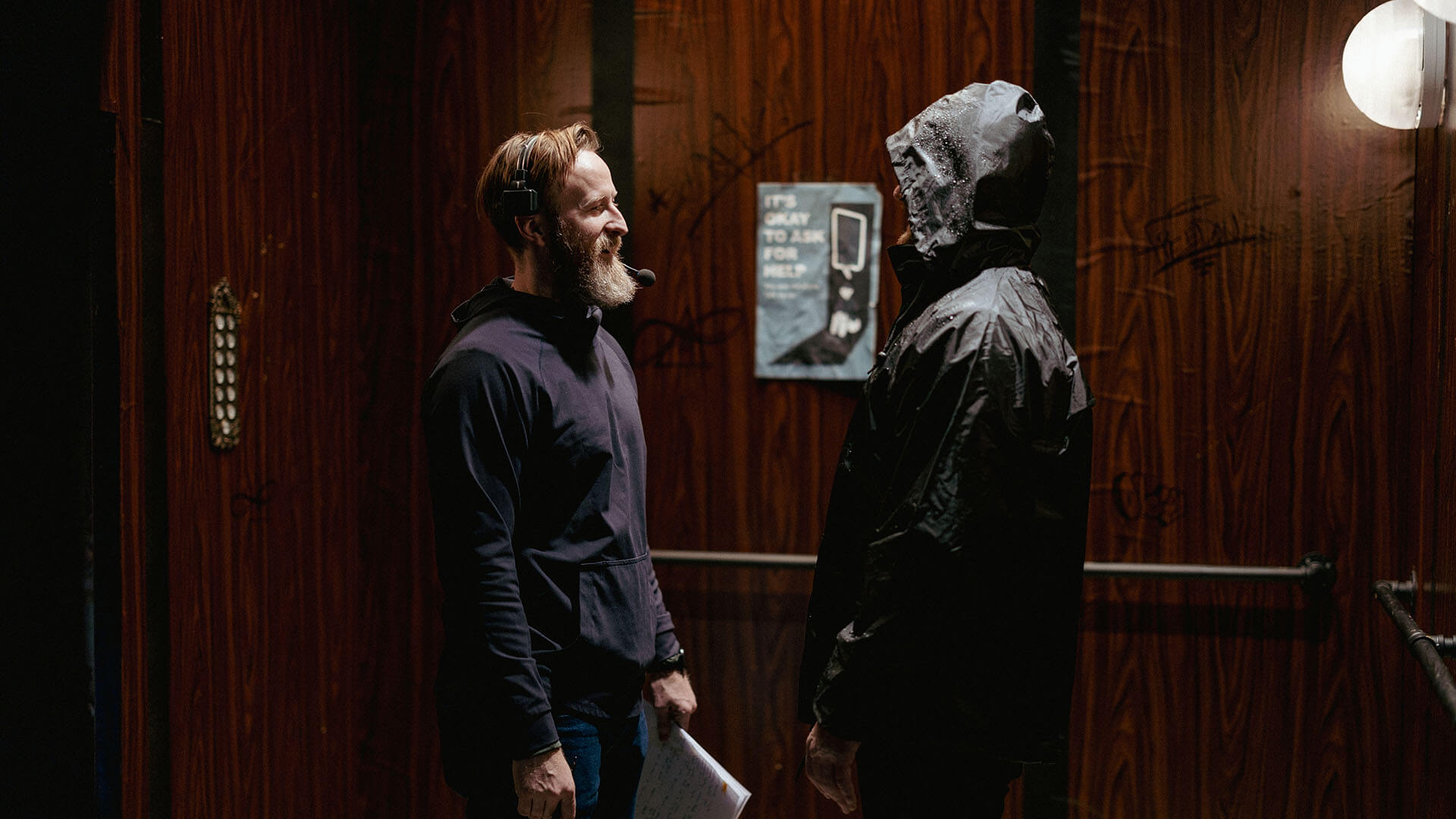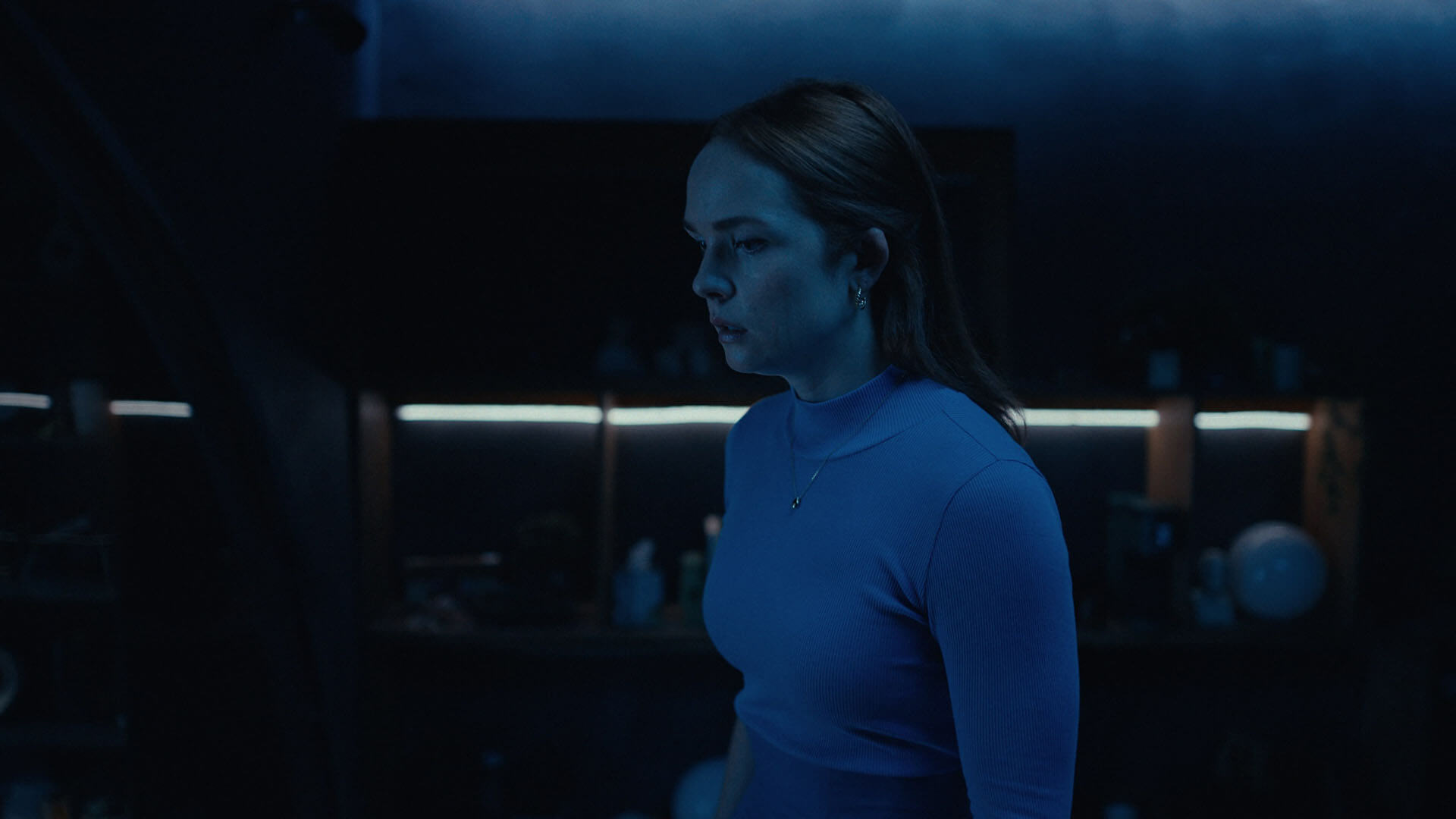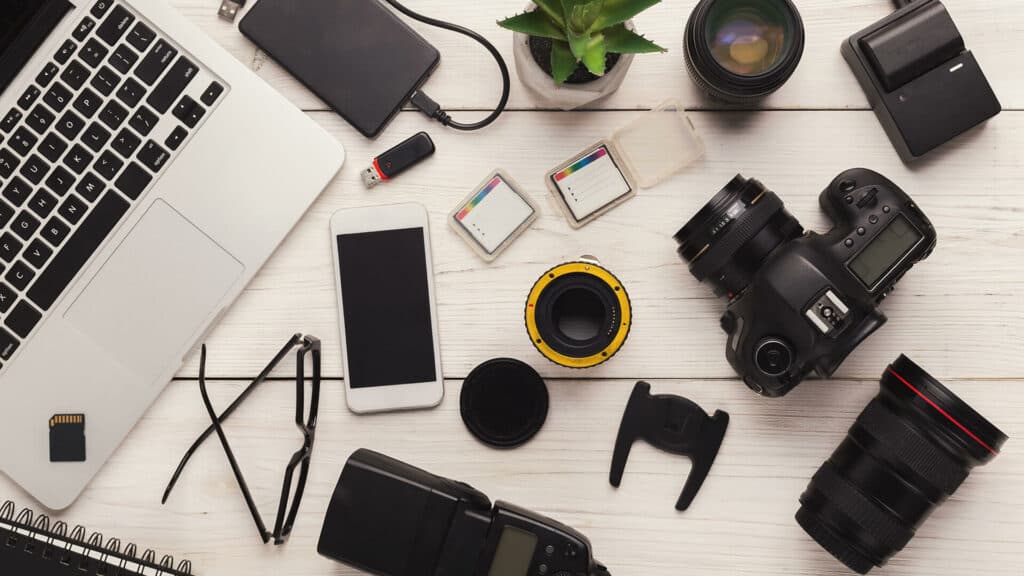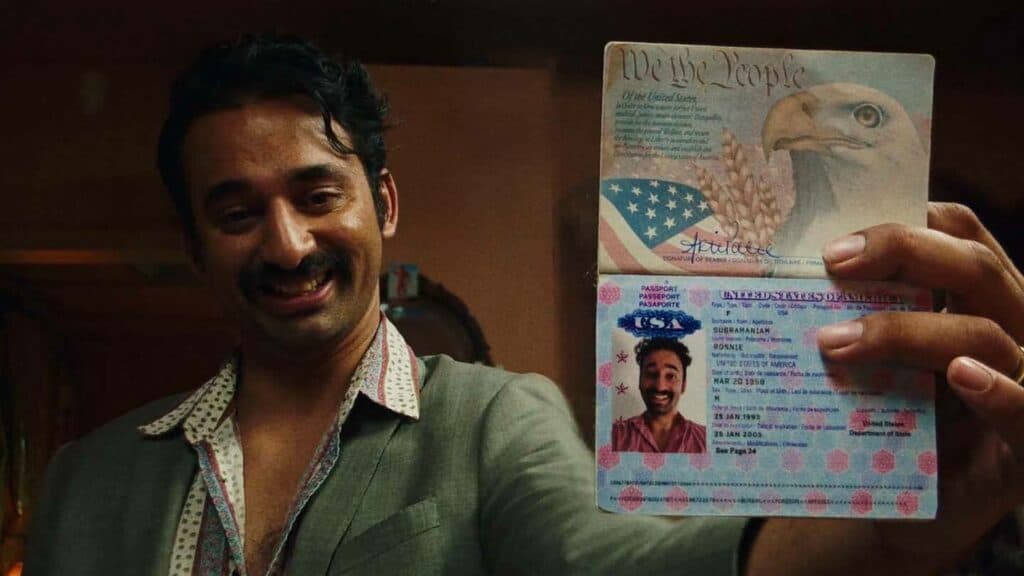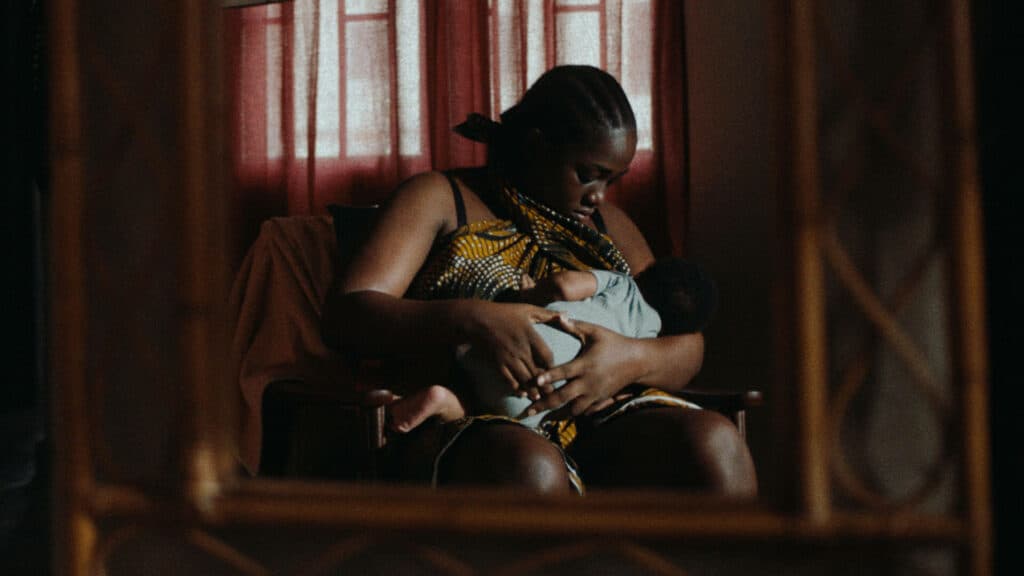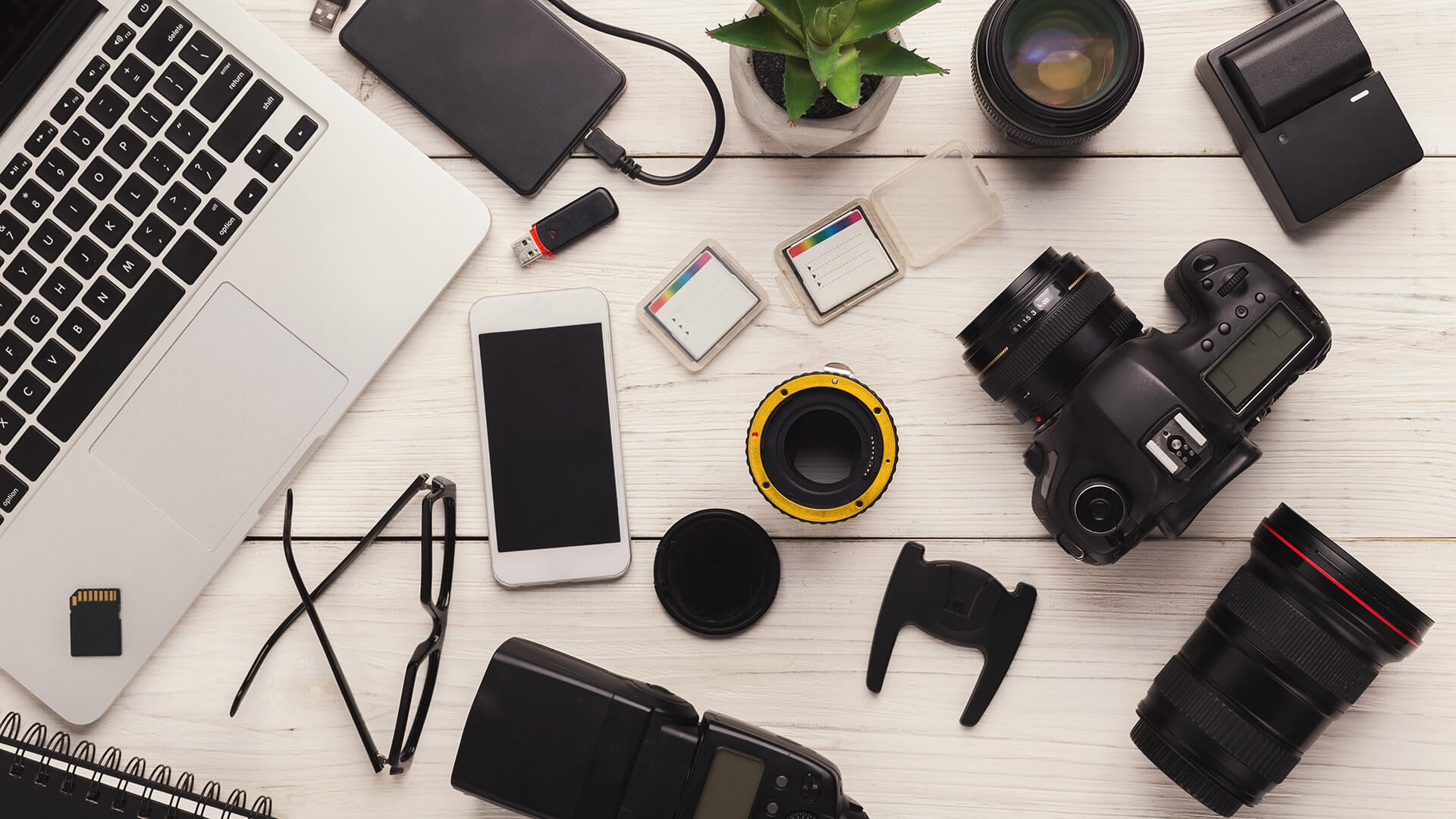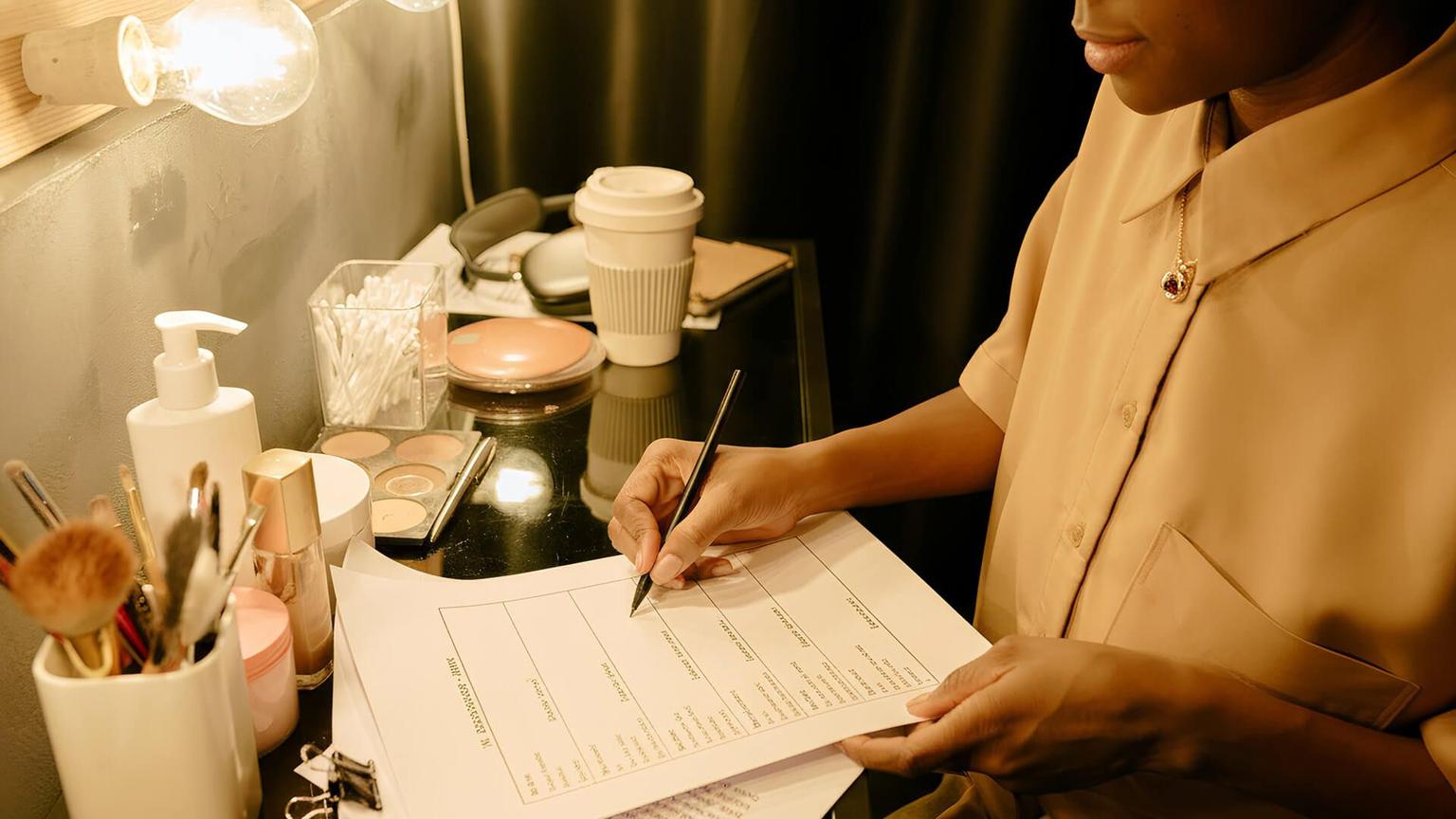By 2025, filmmakers on a budget have access to cameras that deliver professional-grade results. Choosing the right camera depends on your needs – image quality, portability, low-light performance, and cost. Here’s a quick breakdown of six standout cameras for independent filmmakers this year:
- Blackmagic Pocket Cinema Camera 6K G2 ($2,195): Offers impressive 6K resolution and dynamic range but lacks portability and advanced autofocus.
- Canon EOS R5 C ($3,000): Combines 8K video and 45MP stills in a lightweight body but requires expensive CFexpress cards.
- Sony FX3 ($3,898): Netflix-approved 4K video, excellent in low light, and compact, but lacks built-in ND filters.
- Panasonic Lumix S5 II ($2,199): Full-frame 6K video with phase-detection autofocus, though lenses can be pricey.
- Panasonic Lumix GH7 ($2,199): Micro Four Thirds system with great stabilization and portability but smaller sensor limits depth of field.
- Canon EOS R50 ($579): Affordable and lightweight for beginners, though limited lens options may require adapters.
Quick Comparison
| Camera Model | Price | Resolution | Sensor Type | Weight | Notable Features |
|---|---|---|---|---|---|
| Blackmagic Pocket Cinema 6K G2 | $2,195 | 6K | Super 35 | 2.85 lbs | 13 stops dynamic range, ProRes support |
| Canon EOS R5 C | $3,000 | 8K | Full-frame | 1.7 lbs | Dual Pixel AF, 12-bit RAW recording |
| Sony FX3 | $3,898 | 4K | Full-frame | 1.6 lbs | Netflix-approved, excellent low light |
| Panasonic Lumix S5 II | $2,199 | 6K | Full-frame | 1.5 lbs | Phase-detection AF, unlimited recording |
| Panasonic Lumix GH7 | $2,199 | 6K | Micro Four Thirds | 1.81 lbs | 7.5 stops stabilization, compact lenses |
| Canon EOS R50 | $579 | 4K | APS-C | 0.83 lbs | Beginner-friendly, 6K oversampling |
Each option balances features and cost differently, making it easier for filmmakers to find a camera that matches their project goals and budget.
Ranking the Best Budget Cinema Cameras for Indie Filmmaking
1. Blackmagic Pocket Cinema Camera 6K G2
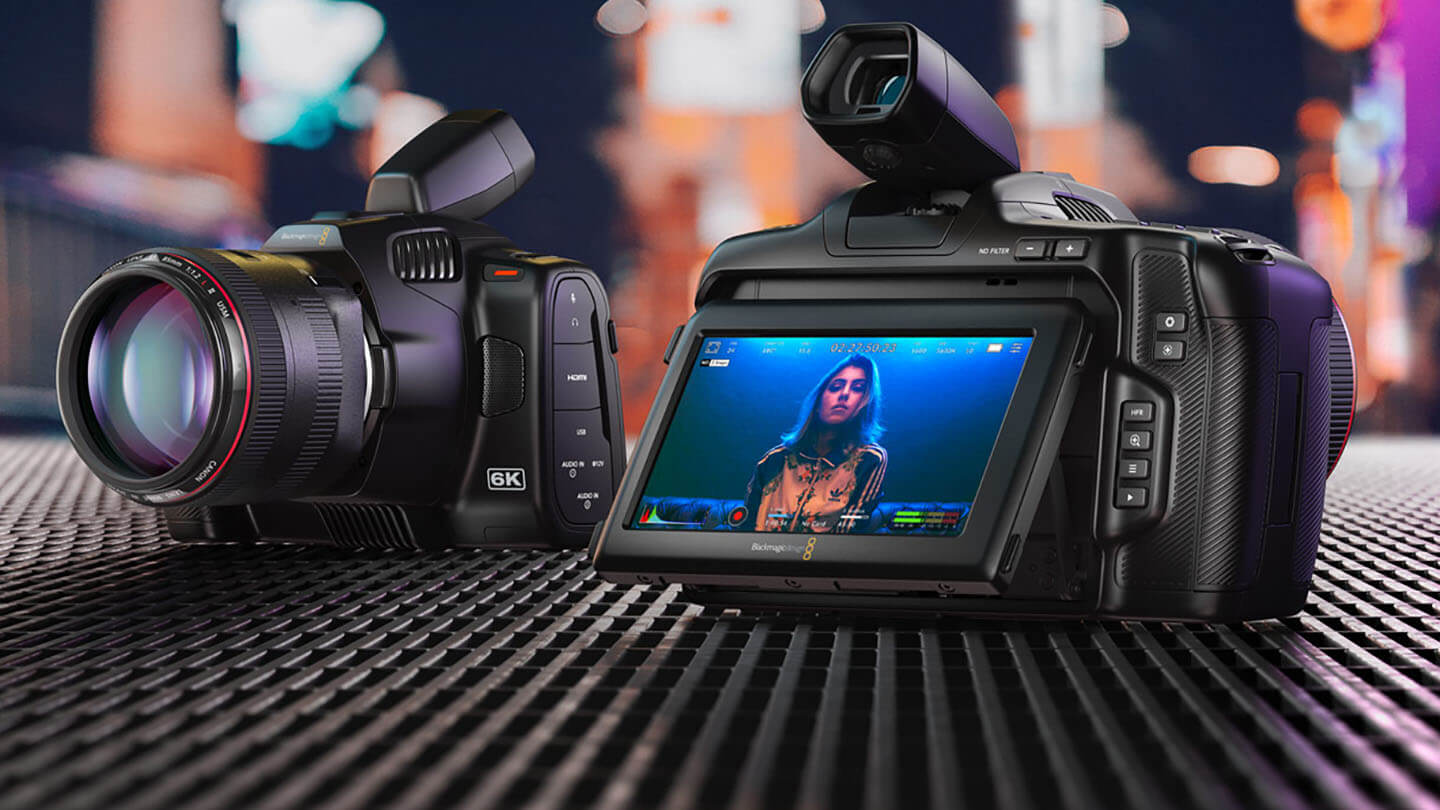 The Blackmagic Pocket Cinema Camera 6K G2 offers professional-grade image quality at a price of $2,195, making it an appealing option for filmmakers seeking cinematic visuals without breaking the bank. With its Super 35 sensor and a suite of advanced recording capabilities, this camera provides features usually reserved for higher-end cinema models.
The Blackmagic Pocket Cinema Camera 6K G2 offers professional-grade image quality at a price of $2,195, making it an appealing option for filmmakers seeking cinematic visuals without breaking the bank. With its Super 35 sensor and a suite of advanced recording capabilities, this camera provides features usually reserved for higher-end cinema models.
Image Quality
The 6K G2 delivers stunning visuals with a native resolution of 6144 x 3456 and 13 stops of dynamic range. Its dual native ISO, reaching up to 25,600, ensures strong performance in low-light settings. The camera supports multiple professional formats, including 10-bit Apple ProRes (up to 4K) and 12-bit Blackmagic RAW (up to 6K). Blackmagic’s Generation 5 Color Science enhances skin tones and overall color accuracy.
Rtings.com gave the camera a 7.9/10 for studio video, highlighting its "fantastic" video quality. They praised its sharp, detailed footage, especially when using the Logarithmic "Film" setting in combination with the "Blackmagic Gen 5 Film to Video" LUT. Beyond video, the camera can capture 21.2-megapixel still images and record at up to 60 fps in full resolution or 120 fps in a cropped mode.
"The combination of high dynamic range, great low light performance and Blackmagic RAW gives you feature film images with precise skin tones and gorgeous organic colors."
Portability
Despite its name, the 6K G2 isn’t exactly pocket-friendly. Measuring 7.0" x 4.8" x 4.6" and weighing 2.85 pounds, it’s larger and heavier than hybrid mirrorless models like the Sony FX3 or Panasonic Lumix S5 II. This heft makes it better suited for controlled environments rather than handheld or travel-heavy shoots. Rtings.com rated it 2.8/10 for travel photography and 3.7/10 for action video, citing its size as a drawback. However, with proper rigging, it can still perform well in fast-paced, run-and-gun filmmaking scenarios.
Autofocus Performance
Autofocus is one of the camera’s weaker points. Many users report that it falls short compared to the advanced autofocus systems found in modern mirrorless cameras, such as the Canon EOS R5 C or Sony FX3. This limitation often requires filmmakers to rely on manual focus or external focus-pulling tools, making precise planning and execution a necessity for achieving sharp results.
Cost-Effectiveness
Priced at $2,195, the 6K G2 offers a compelling package for filmmakers on a budget. It includes a full license for DaVinci Resolve Studio, a professional-grade editing and color correction software, which adds significant value to the purchase. One user summed up the camera’s appeal:
"Basically, anything that I would like to be better with this camera is simply not available anywhere remotely near this price point. Overall, it is an unbeatable value to get this image quality out of an EF mount cinema camera at this price."
- Branden, Verified User
To keep costs down, Blackmagic omitted certain features, such as built-in ND filters and a bright LCD screen. While these omissions may require additional accessories, they don’t detract from the camera’s ability to deliver high-quality imagery at an accessible price point. Next, we’ll explore another standout option for independent filmmakers.
2. Canon EOS R5 C
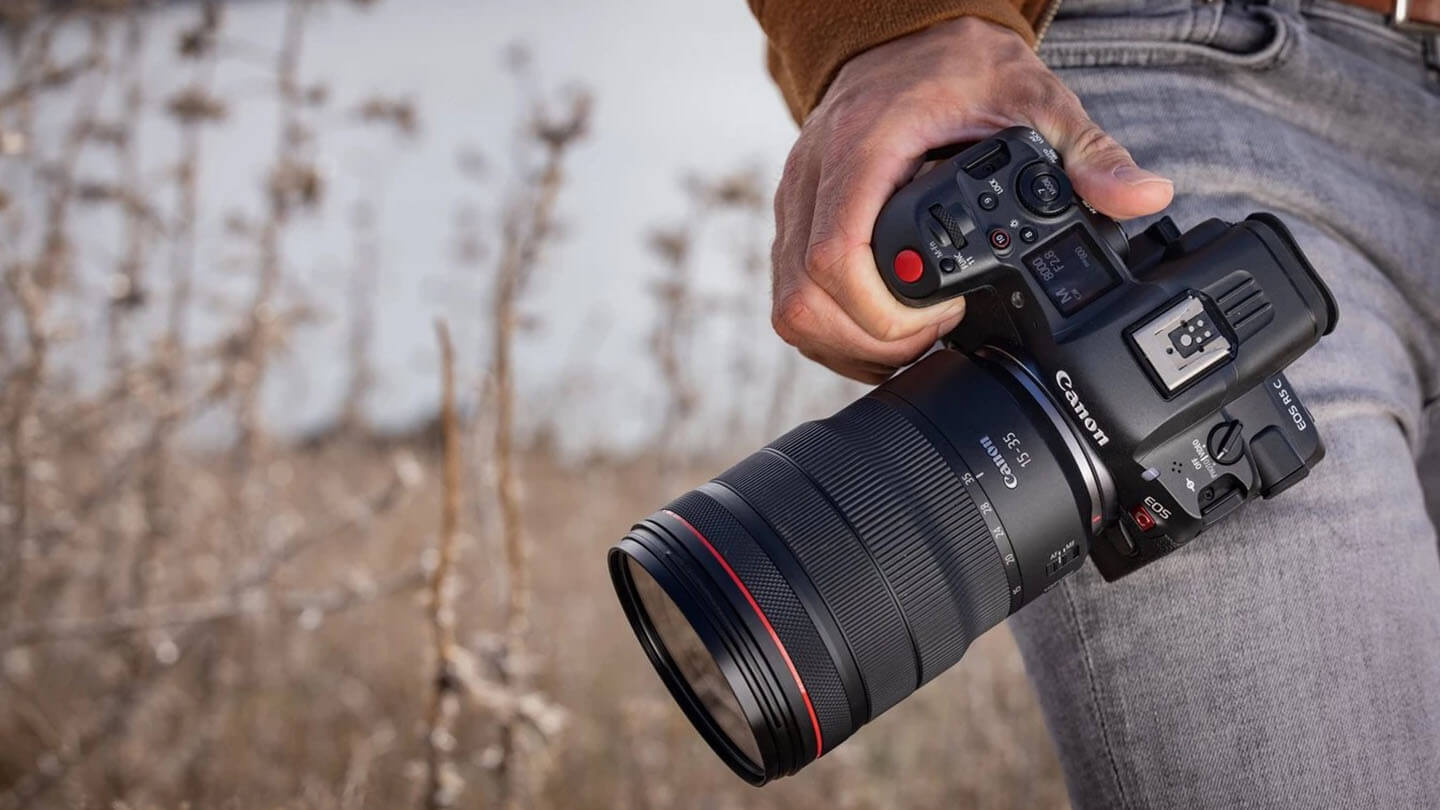 The Canon EOS R5 C, priced at $3,000, brings full-frame 8K video and 45MP still photography together in a compact, versatile body. It’s a great example of how cutting-edge tech can meet the needs of independent filmmakers without breaking the bank. This camera bridges the gap between photo and video performance, delivering professional-grade results for both.
The Canon EOS R5 C, priced at $3,000, brings full-frame 8K video and 45MP still photography together in a compact, versatile body. It’s a great example of how cutting-edge tech can meet the needs of independent filmmakers without breaking the bank. This camera bridges the gap between photo and video performance, delivering professional-grade results for both.
Image Quality
The R5 C captures stunning 8K60 Cinema EOS video and supports internal 12-bit Cinema RAW Light recording. Its Clog2 profile ensures smooth post-production workflows, making it easy to pair with high-end cinema cameras like the C500 II.
Filmmaker Dustin Schmidt frequently integrates the R5 C into his projects, often alongside premium cinema cameras:
"I still love my R5C and use it on every shoot where I’m doing two camera angles for interviews. I regularly have cut it with a C500 II, C300 III and a Red Komodo at times. No issues matching it up with those for client delivery."
The camera also supports MLUTs (monitor lookup tables), allowing for real-time previews of color grading. It even excels in low-light conditions, capturing detailed images from video streams at high ISO settings. With these features, the R5 C seamlessly combines advanced imaging capabilities with a design tailored for mobility.
Portability
Weighing just 1.7 pounds (with battery and recording media), the R5 C is impressively lightweight. French filmmaker Kevin Clerc shared his thoughts on the camera’s portability:
"My first impression of the camera was that it was very light in weight, but had so many features packed into it. Getting 8K long duration video recording in such a small body is so impressive."
Its ergonomic EOS design ensures comfortable handheld shooting for extended periods, whether you’re capturing video or stills. The compact size also makes it easy to mount on gimbals or drones, offering flexibility for dynamic shots. Filmmaker Jon Roemer often uses the R5 C on gimbals to achieve smooth pans and flowing movements when working alongside other cinema cameras.
Autofocus Performance
The R5 C benefits from Canon’s Cinema EOS operating system, which enhances autofocus and ensures seamless workflow integration. Filmmaker Jon Roemer highlighted this advantage:
"I find having Cinema EOS OS on the R5C to be a huge plus."
This unified interface makes the R5 C a reliable choice for professionals juggling multiple Canon cinema cameras on set.
Cost-Effectiveness
At $3,000, the R5 C delivers exceptional value by combining the capabilities of two cameras into one. It eliminates the need for external recorders, saving both money and hassle. Comparable systems with similar features often start at $4,000 to $6,000 or more.
The camera’s dual-mode design includes a dedicated Photo/Video switch, unlocking professional tools like 12-bit Cinema RAW Light, Canon Log 3, HDR PQ, Timecode Sync, and 4-channel audio in video mode. Additional features, such as unlimited recording time, Timecode ports, and compatibility with Canon’s Multifunction hot shoe, make the R5 C a powerful and cost-effective option for filmmakers looking to elevate their work without overspending.
3. Sony FX3
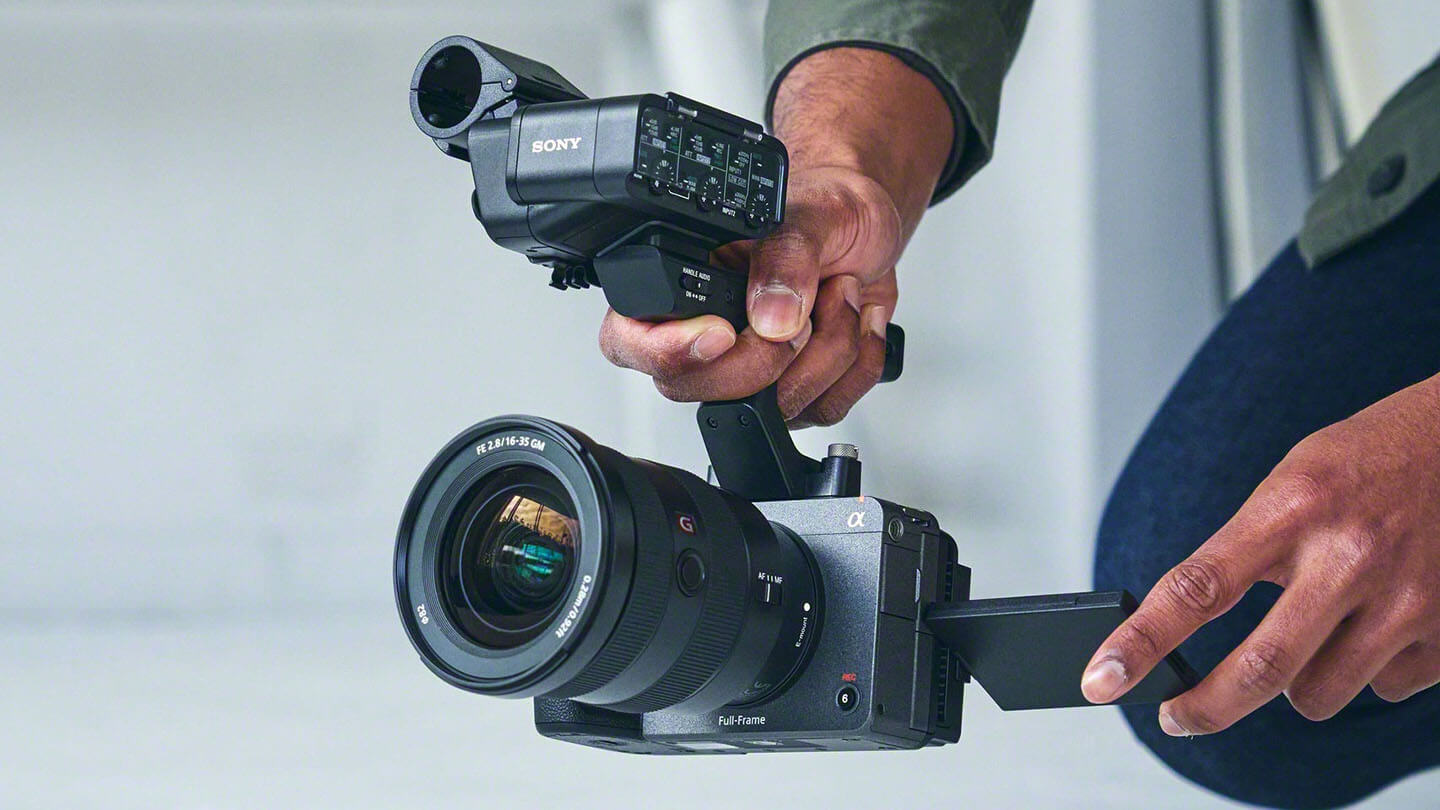 The Sony FX3 is a compact, cinema-focused camera designed to deliver professional-level results. It’s made a name for itself, earning a spot on Netflix’s Approved Camera List and being the go-to choice for director Gareth Edwards when filming the 2023 sci-fi epic The Creator. Despite its small size, this camera packs a punch with its cinematic capabilities.
The Sony FX3 is a compact, cinema-focused camera designed to deliver professional-level results. It’s made a name for itself, earning a spot on Netflix’s Approved Camera List and being the go-to choice for director Gareth Edwards when filming the 2023 sci-fi epic The Creator. Despite its small size, this camera packs a punch with its cinematic capabilities.
Image Quality
The FX3 is all about delivering exceptional visuals. It boasts stunning 4K resolution with over 15 stops of dynamic range, thanks to its 12.1MP full-frame sensor. This sensor is fine-tuned for video, offering dual base ISO settings of 800 and 12,800, which ensures outstanding performance in both well-lit and low-light conditions. It captures 10-bit 4:2:2 color and supports S-Cinetone and S-Log3 gamma curves, giving filmmakers plenty of flexibility in post-production. Meeting Netflix’s rigorous standards for resolution, dynamic range, and color accuracy, the FX3 provides image quality that rivals its bigger sibling, the FX6.
Portability
One of the FX3’s standout features is its portability. Weighing just 1.6 pounds (0.716 kg), it’s perfect for handheld shooting, tight spaces, or mounting on smaller rigs. Its compact size doesn’t compromise its durability either – its weather-sealed body is built to handle outdoor shoots and tough conditions. This ruggedness came in handy during the filming of The Creator across Southeast Asia.
Gaby Levesque from Bunker Hill Media highlights its versatility:
"Go FX3 if: you’re a solo shooter, travel often, or want the smallest possible setup with full‑frame capabilities. It’s the best mix of quality, portability, and affordability."
Compared to the RED Komodo, which weighs around 2.2 pounds, the FX3 is noticeably lighter, making it a great choice for extended handheld shoots.
Autofocus Performance
The FX3’s Fast Hybrid AF system, with 627 focus points, ensures precise focusing even in unpredictable scenarios. Its Real-time Eye AF and subject tracking are particularly useful for interviews and documentaries. Filmmakers can also customize the speed and smoothness of focus transitions, making it a versatile tool for dynamic shooting environments. These features make it an excellent option for solo creators juggling multiple tasks.
Cost-Effectiveness
What sets the FX3 apart is its ability to deliver cinema-quality results at a reasonable price. Gaby Levesque puts it best:
"The FX3 isn’t just a backup or a ‘budget option.’ It’s a powerhouse of a camera that, when used correctly (and sometimes with the right rig), can hold its own in high‑end productions."
Its inclusion on Netflix’s Approved Camera List means it meets streaming and broadcast standards without requiring additional equipment. For independent filmmakers, this camera offers a practical and credible solution for achieving professional results.
4. Panasonic Lumix S5 II
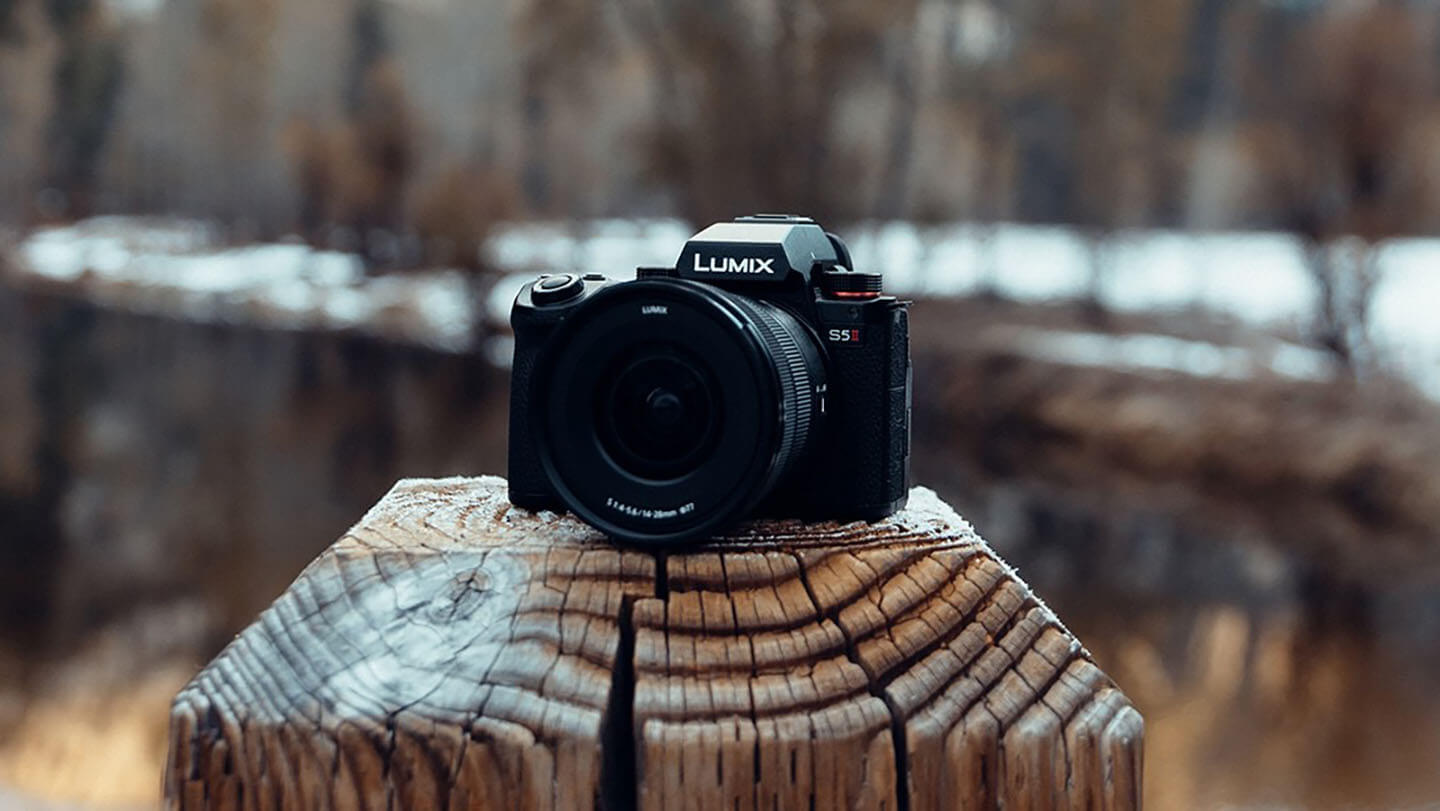 The Panasonic Lumix S5 II is a full-frame camera that delivers professional-level results while staying compact and travel-friendly. It’s a strong choice for independent filmmakers, offering excellent low-light performance and a rich feature set – all at a price that’s hard to beat.
The Panasonic Lumix S5 II is a full-frame camera that delivers professional-level results while staying compact and travel-friendly. It’s a strong choice for independent filmmakers, offering excellent low-light performance and a rich feature set – all at a price that’s hard to beat.
Image Quality
The S5 II shines in low-light settings, thanks to its advanced full-frame sensor and effective noise reduction, which produce clean and detailed images even in challenging conditions. The sensor design skips masked photosites used in phase-detect autofocus, allowing for better light collection and minimizing banding issues. On the video side, it supports internal 10-bit recording and 4K video at up to 60 fps. For those aiming for a cinematic touch, the camera lets you apply LUTs directly to still images. All this performance is packed into a body designed for easy mobility.
Portability
Even with its full-frame capabilities, the S5 II is surprisingly compact. Measuring 4.0 by 5.3 by 3.6 inches and weighing just 1.5 pounds (740g), it’s an ideal companion for filmmakers on the go . Pair it with the kit lens, and the total weight is just over one kilogram. The magnesium alloy body is built to last, offering dust and splash protection for reliable use in outdoor or unpredictable shooting environments.
Autofocus Performance
The camera’s autofocus system is reliable, even when tracking fast-moving subjects at 9 frames per second. Its built-in image stabilization is a standout feature, especially for handheld shooting in low-light conditions. This ensures sharp, steady footage without needing extra stabilization gear.
Cost-Effectiveness
Reviewers have given the S5 II a four-star rating, praising its impressive image quality, long battery life, and durable construction. By combining a full-frame sensor with advanced video features like internal 10-bit recording and 4K capture at 60 fps, the S5 II delivers professional-grade performance at a fraction of the cost of higher-end models. For independent filmmakers, it’s a smart and budget-friendly choice.
sbb-itb-376fc17
5. Panasonic Lumix GH7
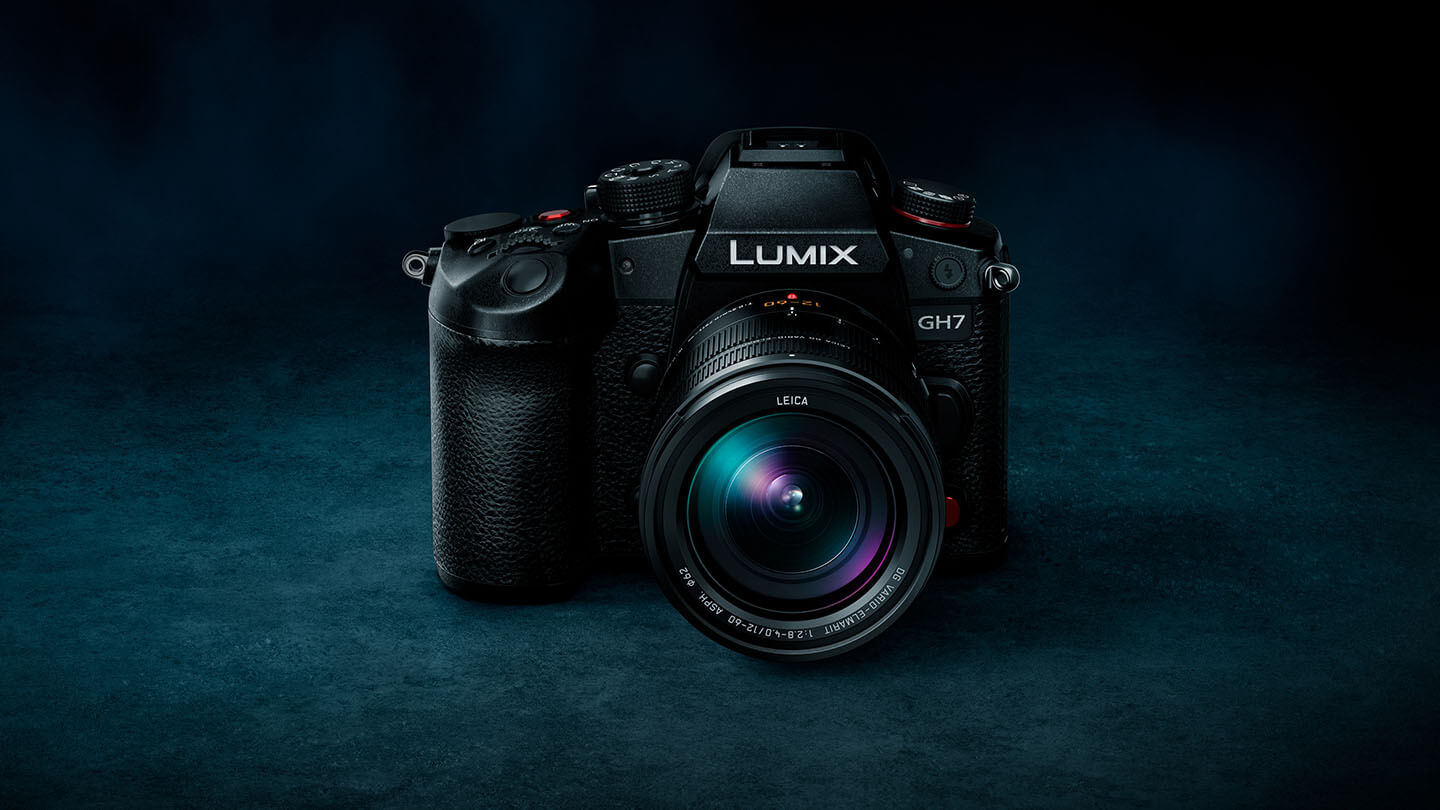 The Panasonic Lumix GH7 builds on the strengths of the Micro Four Thirds lineup, addressing some of the challenges faced by previous GH-series models. Designed with independent filmmakers in mind, this compact powerhouse delivers professional-grade video capabilities in a portable package.
The Panasonic Lumix GH7 builds on the strengths of the Micro Four Thirds lineup, addressing some of the challenges faced by previous GH-series models. Designed with independent filmmakers in mind, this compact powerhouse delivers professional-grade video capabilities in a portable package.
Image Quality
At the heart of the GH7 is a 25.2MP BSI CMOS sensor, similar to the one found in the Lumix G9 II. This updated sensor features an improved dual output gain system at base ISO, which significantly boosts dynamic range and reduces the shadow noise issues that plagued the GH6. While its dynamic range is slightly lower – about 2/3 EV – compared to larger APS-C sensors, the GH7 holds its own when it comes to detail capture at base ISO. This makes it a solid option for color grading and post-production flexibility.
Its compact design further enhances its appeal for on-location shooting, making it a versatile choice for filmmakers.
Portability
Weighing only 1.81 pounds (0.82 kg), the GH7 maintains a similar design to the GH6 while embracing the portability advantages of the Micro Four Thirds system. The lightweight lens ecosystem is a significant asset for filmmakers who need mobility. Filmmaker Jon Simo highlighted this in his experience with the GH7:
"The GH7 is the reason why this project was even possible in the first place. The highly ambitious concept meant that we had to be as nimble as possible, be able to react and pivot on the fly and ensure that our gear wouldn’t slow us down. We didn’t have massive pelican hard cases in sight on this project – everything was contained to our backpacks and camera bags, which empowered us to be able to move locations quickly, hike into remote areas easily and not need additional support crew."
This portability makes the GH7 ideal for projects requiring quick transitions and minimal gear.
Autofocus Performance
The GH7 ditches the older Depth-from-Defocus system in favor of Panasonic’s Phase Hybrid AF. This upgrade delivers reliable subject recognition for humans, animals, and vehicles. However, tracking extremely fast-moving subjects can still be challenging. While Sony continues to set the standard for video autofocus, the GH7’s performance now rivals the latest systems from Canon and Nikon.
Additionally, the GH7 offers 7.5 stops of image stabilization (CIPA standard), ensuring smooth, steady footage even during handheld shooting. This combination of features enhances its usability for both beginner and advanced filmmakers.
Cost-Effectiveness
Despite its advanced features, the GH7 is priced competitively, offering tools typically found in higher-end models. This makes it an excellent choice for filmmakers seeking high-quality video capabilities without breaking the bank.
6. Canon EOS R50
 The Canon EOS R50 stands out as a budget-friendly choice for filmmakers looking to step into the world of mirrorless cameras without breaking the bank. This compact model borrows several features from Canon’s pricier EOS R10, packing professional-grade capabilities into a portable design. It’s an excellent option for solo creators who need both quality and mobility.
The Canon EOS R50 stands out as a budget-friendly choice for filmmakers looking to step into the world of mirrorless cameras without breaking the bank. This compact model borrows several features from Canon’s pricier EOS R10, packing professional-grade capabilities into a portable design. It’s an excellent option for solo creators who need both quality and mobility.
Image Quality
Equipped with a 24MP APS-C sensor, the EOS R50 uses 6K oversampling to produce crisp, detailed 4K footage. This oversampling process captures more data than required for 4K output, resulting in sharper and more refined video quality during post-production.
"The EOS R50 V’s standard 4K footage is derived from 6K capture and delivers detailed footage suitable for vlogging." – Digital Photography Review
The camera also supports Canon Log 3, which gives filmmakers greater flexibility when color grading. It records 4K video at 30p without cropping and at 60p with a 1.56x crop, with the latter offering improved rolling shutter performance. For extended shoots, the R50 can record up to 70 minutes of 4K 30p video on a single charge.
Portability
Weighing only 0.83 lbs (375 g) with the battery and card – or 0.72 lbs for the body alone – the EOS R50 is incredibly lightweight and compact. Measuring 4.58 x 3.37 x 2.71 inches, it easily fits into small bags, making it a perfect companion for on-the-go creators. Its design includes a variable-angle touchscreen and a front-facing record button, making it particularly convenient for solo filmmakers who need to monitor their shots while recording.
Autofocus Performance
The R50 features Canon’s advanced Dual Pixel CMOS AF II system, inherited from its higher-end models. According to Digital Photography Review, this autofocus system is "impressive". It excels at subject recognition and tracking, ensuring sharp focus even with moving subjects. This makes it a reliable choice for interviews, documentaries, and other dynamic filming scenarios.
Cost-Effectiveness
At just $579 for the body-only version, the EOS R50 offers outstanding value. Digital Photography Review awarded it a score of 84%, applauding its ability to capture high-quality photos and videos. While the limited availability of RF-S lenses may require some users to invest in EF-S lenses with adapters for added versatility, the camera compensates with features like 10-bit HDR video recording – uncommon at this price point. With a user rating of 4.7, the R50 is praised for its excellent autofocus, fast burst shooting, and lightweight build, delivering professional-level results without a hefty price tag.
Advantages and Disadvantages
Every camera comes with its own set of strengths and limitations, designed to cater to different filmmaking needs and budgets.
Cinema cameras, like the Blackmagic Pocket Cinema Camera 6K G2, shine in professional settings. They offer exceptional image quality, a wide dynamic range, and support for professional recording formats like ProRes RAW and Blackmagic RAW. Their modular designs allow for complex setups, but they tend to be more expensive and less portable.
Mirrorless cameras, on the other hand, are projected to dominate the market by 2025, capturing 66% of sales in 2024. Their appeal lies in features like fast autofocus, excellent low-light performance, and compact designs, making them perfect for documentaries, travel shoots, and projects requiring quick setups.
The price gap between cinema and mirrorless cameras is significant. For instance, the ARRI ALEXA Mini LF costs around $58,760, whereas the Sony FX3 is priced at $3,898. Although mirrorless camera prices have risen by 200% over the past five years, they remain far more affordable than high-end cinema models.
| Camera Model | Pros | Cons |
|---|---|---|
| Blackmagic Pocket Cinema Camera 6K G2 | Professional-grade video quality, wide dynamic range | Less portable; requires additional accessories |
| Canon EOS R5 C | Shoots 8K videos, versatile hybrid camera, Dual Pixel Autofocus | Overheating issues during extended 8K recording; expensive CFexpress cards |
| Sony FX3 | Compact and lightweight; excellent low-light performance; Netflix-approved 4K video; 4K 120fps | Lacks built-in ND filters; no internal RAW recording |
| Panasonic Lumix S5 II | Phase detection autofocus, unlimited recording times, uncropped 6K video | 1.5x crop at 4K/60p; not aesthetically appealing; native L-mount lenses can be costly |
| Panasonic Lumix GH7 | Multiple 4K codecs, built-in wireless live streaming, 6K video at 60fps with 10-bit 4:2:2 color | Autofocus could be better; too similar to the GH5 Mark 1; smaller sensor limits depth of field control |
| Canon EOS R50 | Beginner-friendly; includes a directional microphone | Limited RF-S lens selection; entry-level build quality |
Another key difference lies in sensor size, which significantly affects performance. Cameras with full-frame sensors, like the Sony FX3 and Canon EOS R5 C, excel in low-light conditions and provide a shallower depth of field. In contrast, smaller sensors, such as Micro Four Thirds, result in lighter setups, smaller lenses, and often better stabilization.
Autofocus performance also varies widely. Sony’s hybrid cameras are known for their fast and reliable autofocus, making them ideal for interviews or documentaries that require consistent focus tracking. Other systems may demand more manual focus adjustments.
For filmmakers on a budget, finding the right balance between workflow requirements and image quality is essential. Cinema cameras are tailored for professional post-production workflows, offering outstanding dynamic range – such as the Sony FX6 with over 15 stops and the Blackmagic URSA Cine 12K with around 14 stops. Meanwhile, mirrorless cameras simplify file management and support faster turnaround times, though they might require extra effort in color grading.
Ultimately, factors like price, sensor size, autofocus capabilities, and workflow integration play a crucial role in helping filmmakers choose the best camera for their specific projects.
Conclusion
Selecting the right camera boils down to matching your specific filmmaking needs with your budget and workflow. Each of the cameras mentioned offers distinct benefits tailored to different creative scenarios.
- For budget-conscious filmmakers, the Panasonic Lumix GH7, priced at around $2,199, delivers professional video features without breaking the bank.
- Documentary creators will appreciate the Sony FX3, a compact yet powerful option at approximately $3,899.
- For hybrid projects that require both high-quality photos and videos, the Canon EOS R5 C, priced at about $4,499, is an excellent choice.
These options cater to a wide range of requirements, from affordability to versatility.
As highlighted earlier, key factors like sensor size, image stabilization, and recording formats play a crucial role in choosing a mirrorless camera that aligns with your creative vision. Mirrorless systems stand out for their interchangeable lenses and dual functionality for both video and still photography.
FAQs
What’s the difference between full-frame and Micro Four Thirds sensors in filmmaking, and how do they impact image quality and portability?
Full-frame sensors are popular for their outstanding image quality, especially under low-light conditions. Their larger size and greater dynamic range allow for incredible detail and a wider field of view, making them a go-to choice for cinematic shots where depth and clarity are essential.
In contrast, Micro Four Thirds sensors are valued for their compact and lightweight design, which makes them ideal for filmmakers prioritizing portability and ease of use. They also provide a deeper depth of field, which works well for specific shooting styles, and they tend to be more budget-friendly. The choice ultimately comes down to what matters most: achieving the highest image quality or having a more portable and affordable setup.
How does the autofocus performance of the Blackmagic Pocket Cinema Camera 6K G2 compare to other cameras, and what does this mean for independent filmmakers?
The Blackmagic Pocket Cinema Camera 6K G2 doesn’t come with continuous autofocus or advanced tracking features. This puts it at a disadvantage compared to cameras like the Sony FX30 or Sony FX3, which offer perks like face-tracking and better in-body stabilization.
For independent filmmakers, this means manual focus will be your go-to. While manual focus provides creative control, it can also be more time-intensive and tricky, especially when dealing with fast-paced or intricate scenes. The 6K G2 shines in delivering top-notch image quality and cinematic flexibility, but its autofocus limitations mean you’ll need solid focus-pulling skills and extra planning to nail those dynamic shots.
How do the Canon EOS R5 C and Sony FX3 compare for independent filmmakers working on both video and photography projects?
When choosing between the Canon EOS R5 C and the Sony FX3, independent filmmakers need to consider their specific project needs and shooting preferences. The R5 C shines with its 8K sensor, making it a top choice for high-resolution projects that require intricate detail and advanced color grading. It’s also well-suited for hybrid creators, seamlessly handling both video and photography tasks.
The FX3, meanwhile, offers a full-frame sensor with exceptional low-light performance and dynamic range. This makes it a go-to option for filmmakers working in dimly lit settings or requiring adaptability across various shooting conditions. Its compact and lightweight build adds to its appeal, especially for those who need a camera that’s easy to carry and use on location.
Both cameras deliver exceptional 4K recording, but their strengths differ. The R5 C focuses on resolution and color precision, while the FX3 emphasizes portability and low-light versatility. Think about factors like weight, ergonomics, and the demands of your projects when deciding which camera fits your needs best.
Related Blog Posts
About the Author
No comments yet.
Got Something to add to this article?
Your email address will not be published. Required fields are marked *


